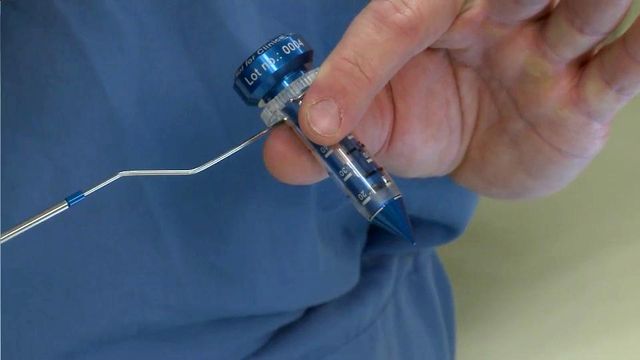New tech allows for less invasive brain surgeries
Brain surgery is among the most risky and complex of all medical procedures, but new technology is allowing surgeons at Duke Raleigh Hospital to perform less invasive procedures.
Posted — UpdatedUsing what's called a "brain path device," surgeons are now able to perform highly-technical and dangerous surgeries to remove tumors or cysts without opening a large section of the skull – a practice that puts healthy brain tissue at risk.
"This is a minimally-invasive way of taking out deep-seated tumors," Dr. Peter Grossi, a neurosurgeon at Duke Raleigh Hospital, said.
The new device only needs an opening in the skull slightly larger than a dime.
Days before surgery, imaging technology captures details about the tumor and other brain structures in order to plan a surgical pathway. Grossi says the new device helps make that process simpler and safer.
"What we do is pass this through the brain to the correct depth using neuro-navigation," he said.
The device moves past natural brain folds and fibers without cutting through them. Using a camera, surgeons can see brain structures in high definition and can avoid them while cutting out a tumor. A small tool is used to cut the tumor into pieces, and then those sections are sucked out through a tube.
There is less bleeding, movement of the tissue and less use of medications with brain path surgeries. Usually, patients are able to go home sooner.
The brain path also gives surgeons more options to treat patients who have tumors in the subcortical region of the brain – the area below the cerebral cortex.
"It opens up the possibility of operating on people who are older or who have other medical problems," Grossi said.
• Credits
Copyright 2024 by Capitol Broadcasting Company. All rights reserved. This material may not be published, broadcast, rewritten or redistributed.






